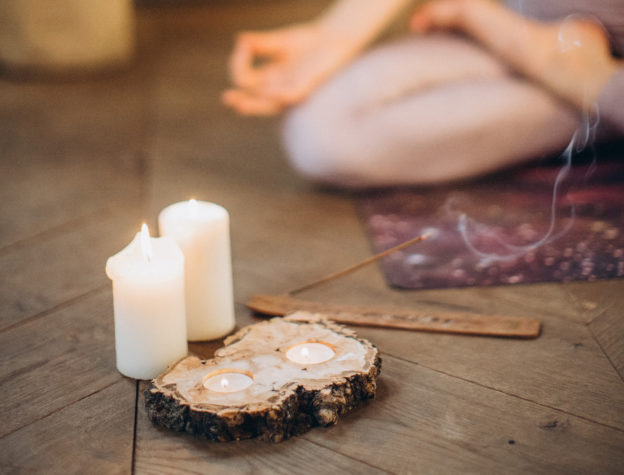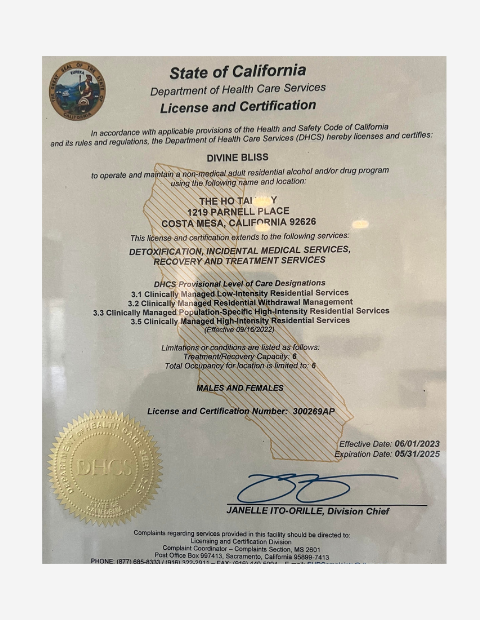We use our five senses every day, but some senses we focus on less than others. For example, you may or may not notice the smell of the salty sea air, the scent of your favorite dinner cooking, or your mother’s perfume. Still, these olfactory sensations feed your mind information and can trigger emotions and memories. These olfactory sensations may help you recall experiences from your past or bring up powerful feelings that relate to these memories.
Within addiction treatment, the use of senses can also be very powerful. Often, people lose touch with them, but focusing on the senses individually and through different experiences can help in the healing process. With that being said, how can olfactory inclusion be used in healing treatments such as yoga?
What Is Olfactory Inclusion?
The use of the five senses within addiction treatment and recovery is a well-known concept. Using one or more of your senses to distract, redirect, or ground you during anxiety, cravings, or intense emotions can help you survive without giving in to the moment. This is particularly true of women who have experienced trauma.
Your sense of smell is often overlooked but is strongly tied to emotions, memory, and language. Your olfactory sensations are closely associated with social and emotional experiences because they are so closely linked with the emotional part of your brain. Likewise, your emotions can impact your sense of smell when you associate those smells with prior emotional experiences, negative or positive. Olfactory sensations can recall those experiences by association without any conscious effort on your part.
Olfactory inclusion uses the sense of smell, particularly within another form of treatment. One of the most common ways this is accomplished is through the use of essential oils, which have been used for centuries in various cultures. While essential oils also have other properties that you may find beneficial, they are best known for their appeal to the sense of smell.
Using the Sense of Smell to Help Anxiety
Anxiety commonly co-occurs with substance abuse and can continue into recovery. Some people will have times when their anxiety renders them unable to function because they are overwhelmed by their thoughts and fears. Additionally, anxiety typically causes physical symptoms. This is often referred to as “fight or flight” mode. Panic attacks are the most severely disabling types of anxiety episodes. People experience intense physical and mental symptoms, including a pounding heart, inability to breathe, and overwhelming thoughts and emotions.
When anxiety increases and begins to overwhelm, specific scents can distract and redirect focus until the anxiety wave has passed. Aromatherapy has been found to help patients of various conditions who have anxiety. Essential oils and other plant extracts from lavender, chamomile, lemon balm, rose oil, orange, and more have been shown to have remarkably calming effects. Often, essential oils are blended to create new scents to achieve a variety of responses and benefits.
What Are the Benefits of Essential Oils in Treatment?
Like other smells, essential oils are most commonly used in treatment for addiction recovery for their appeal to the olfactory senses, but they have additional properties as well. Ancient civilizations in Egypt, China, and India used essential oils to heal the mind, body, and spirit. Essential oils have been used to help psychological and physical symptoms of pain, headaches, insomnia, eczema, digestive problems, and even some forms of depression and anxiety for centuries. Their benefits extend to many of the symptoms experienced in recovery from substance abuse today.
Essential oils are being used as a complementary treatment for addiction and relapse prevention more often as women become aware of their benefits. Essential oils are used primarily for their calming effects, but when olfactory inclusion occurs with other evidence-based practices such as mindfulness or yoga, using your sense of smell helps you feel grounded and can enhance your experience.
Combining Forces With Yoga
Olfactory inclusion with yoga is a way to create a calm environment, particularly for women who have experienced trauma or have PTSD. Utilizing the sensory experience of smell helps you stay focused and quiet your mind to receive the full benefits of the experience. Because breathing is a crucial part of yoga, olfactory inclusion enables you to remember to breathe.
Yoga challenges you to focus on the sensations in your body, which can be particularly difficult for women healing from trauma and substance abuse. Utilizing your sense of smell by using essential oils during yoga helps redirect your focus back to your body by reinforcing the use of the olfactory sensation.
How can olfactory inclusion be used along with yoga in treatment? Using your sense of smell can distract or redirect your focus when anxiety or other strong emotions overwhelm you. Olfactory inclusion is beneficial with yoga to keep you both grounded and focused and receive the most benefits for your mind and body. The Ho Tai Way – Recovery For Women is a trauma-informed residential treatment program. We use evidence-based practices to treat addiction and offer complementary therapies to enhance your experience. We have a dynamic curriculum led by a team of licensed medical and therapeutic clinicians and technicians who are compassionate and professional. We offer a safe, loving, non-judgmental environment for you to heal from substance abuse. Contact our Costa Mesa, California facility at (714) 581-3974 today to learn more about our programs. We offer a new perspective, strategies, and life skills to help you find your way again.









